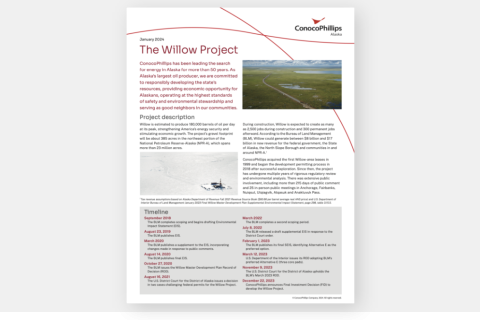Located on Alaska’s North Slope in the National Petroleum Reserve (NPR-A), the Willow project is estimated to produce 180,000 barrels of oil per day at its peak, decreasing American dependence on foreign energy supplies. The project is projected to deliver $8 billion to $17 billion in new revenue for the federal government, the state of Alaska and North Slope Borough communities. Willow will be built using materials primarily made and sourced in the U.S. and has the potential to create over 2,500 construction jobs and approximately 300 long-term jobs. The project is designed to support and coexist with subsistence activities with many mitigation measures built into the project design. Learn more.
ConocoPhillips welcomes the Department of the Interior’s recent Record of Decision (ROD) on the Willow project, adopting the three core pads detailed in the Bureau of Land Management (BLM) preferred Alternative E. Willow is important for both Alaska’s economy and America’s energy security.




